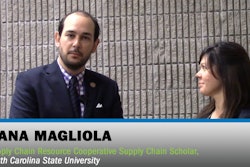
Microsoft is taking giant leaps forward in sustainability. A new report shows the company is now requiring suppliers to report on efforts to prevent slave labor and corruption in the supply chain, and it’s working. After implementing the Tier 1 Model Factory Scorecard in 2013, which tracks suppliers’ ability to provide proper living and working conditions, Microsoft now sees every one of its Tier 1 suppliers achieving a 95 percent or higher rating.
Microsoft achieved this milestone through a supplier performance management (SPM) approach to procurement. By holding suppliers accountable for meeting sustainability standards, the company was able to make significant progress in sustainability and generate real value creation. As the SPM approach continues to grow in popularity, it is important for procurement professionals to understand what the method entails and how to leverage it to create a more sustainable supply chain.
What Is Supplier Performance Management and Why Is It Rising in Popularity?
Supplier performance management moves beyond a compliance mindset, and involves motivating suppliers to embrace corporate social responsibility (CSR) initiatives, and innovate beyond the traditional factors of cost, on-time delivery and quality to achieve sustainability objectives.
On the surface, a compliance approach may seem like less work for supply chain professionals, but it is actually often the opposite and doesn’t deliver real results. When suppliers are simply required to be compliant, procurement teams tend to evaluate the same risks and under-performing suppliers over and over again, and never deal with root causes. This turns into an endless cycle that produces very little gains for both parties and makes it difficult to measure the impact on the bottom line.
With consumers now holding their favorite brands to a higher sustainability standard and supply chain due diligence regulations—the UK Modern Slavery Act, France’s Devoir de Diligence and the United States’ new trade act—requiring companies to reevaluate how they manage every tier of their supply chains, failing to meet sustainability criteria is now a legal and reputational liability for all involved. Procurement leaders should not be satisfied with simply meeting minimum compliance requirements, but rather adopt a SPM approach that holds supply partners accountable and incentivizes them to be more sustainable, ultimately creating a holistic, long-term approach to sustainability.
Three Steps to a Successful Supplier Performance Management Program
1. Implement a top-down approach and get buy-in from the C-suite.
Aligning the sustainable mission with the company’s overall business strategy creates a holistic sustainability philosophy throughout all company activities and operations. This business-wide support makes it possible to implement a SPM approach as it integrates accountability across the entire organization, infuses sustainability into business decisions much earlier in the process, and encourages suppliers and other key stakeholders to adopt a sustainable mindset.
Nestlé’s Creating Shared Value program, which includes 38 public sustainability commitments the company intends to meet by 2020, has full support from the C-suite and firmly embeds supply chain initiatives throughout the program. This gives the procurement team a solid foundation for carrying out sustainable practices. When the C-suite is fully on board with the sustainability mission, procurement can be more proactive in meeting sustainability standards and use the SPM approach to push for better performance from suppliers.
2. Incentivize suppliers and establish a solid measurement plan.
When suppliers only have pass or fail compliance requirements, they have no incentive to excel. Many may only work for minimum compliance, leaving procurement teams with the heavy lifting of working toward sustainability initiatives.
In an SPM model, buyers implement a rich scoring system that rewards top suppliers. This motivates suppliers to move beyond compliance and work toward mutual sustainability goals that they have a stake in achieving. In this pull model, suppliers are incentivized to succeed and, rather than spending time and money trying to improve suppliers who are underperforming, buyers get a better return on their investments and make real progress in sustainability initiatives.
Coca-Cola sees success by working with their suppliers to set individual emissions goals. Each supplier measures, manages and reports on their carbon footprint, which fosters an environment of continuous self-improvement. With 65 percent of Coca-Cola’s carbon footprint rooted in the supply chain, this is an effective SPM approach that significantly improved the company’s supply chain sustainability.
Education is critical for helping suppliers innovate beyond compliance. Provide a comprehensive CSR implementation guide that addresses the benefits of CSR practices, and gives an overview of the core concepts, implementation guidance, and recommendations based on the company’s specific size, location and sector. When the supply base is educated, suppliers and their workforces are better equipped to ensure sustainability.
3. Improve, innovate and collaborate together.
Industry collaboration is crucial for getting sustainability programs off the ground. A great example of this is Together for Sustainability (TfS), the chemical industry sustainability initiative. TfS developed and implemented a global program to assess, audit and tangibly improve sustainability practices within the supply chains of the industry. Members collaborate on best practices, work together to make positive changes and spur continuous improvement toward sustainability.
Companies should look to peers to see what methods worked for others and decipher whether they can be emulated in their own supply chains. Working with competitors to create industry-wide standards for supply chain sustainability fosters an environment of collaboration and continuous improvement, and creates a more sustainable supply base for everyone.
The Value of Supplier Performance Management
Managing supplier performance and encouraging suppliers to take ownership of their own sustainability initiatives reaps a higher return on investment than a simple compliance approach. This is because SPM develops suppliers committed to growing their businesses using social and environmental performance as a source of a competitive advantage, benefitting both the buyer and supplier. Instead of chasing non-compliant suppliers, buyers can focus on helping innovative suppliers keep improving. Supplier performance management can generate value that not only gives your company a leg up on the competition, but also makes a real, positive impact on the global supply chain.




















